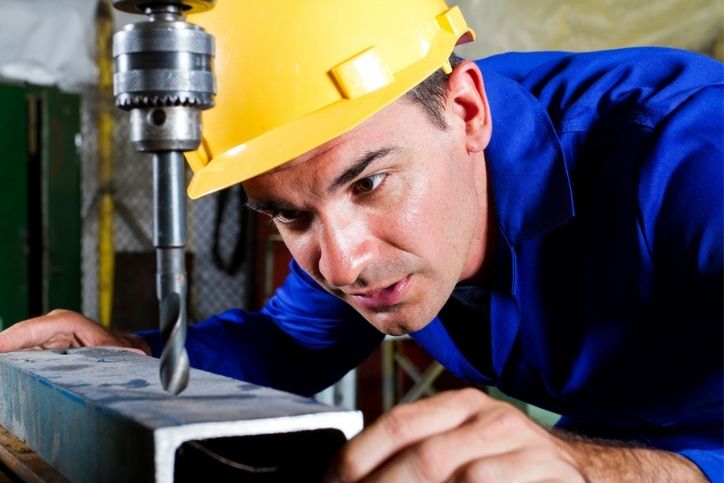Drilling holes perfectly straight without a drill press might seem challenging, especially when precision is needed in DIY projects or professional craftsmanship. However, with the right techniques and tools, anyone can master this skill. In this guide, we’ll explore how to drill straight without a drill press and achieve accurate results every time.
Whether you’re working on a home improvement project or a professional task, understanding how to maintain a straight line while drilling can significantly improve your work’s quality. This skill becomes crucial in instances where a bulky drill press isn’t available or practical.

Understanding the Basics of Drilling Straight
Before diving into techniques, it’s important to comprehend the basics of drilling straight. The primary objective is to maintain alignment throughout the drilling process to avoid angled holes that can compromise the structural integrity of your work.
Essential Tools and Preparations
Having the right tools is essential. While a drill press provides inherent stability, other tools can also help. Essentials include a hand drill, clamps, a straight edge, a carpenters square, and a spirit level. Moreover, preparing your workspace to be stable and clutter-free can prevent mishaps.
Techniques to Drill Straight Without a Drill Press
Using a Drill Guide
A drill guide is designed to keep your drill bit aligned. This versatile tool can be adjusted for different angles, ensuring you maintain the exact path. It’s a worthwhile investment for any enthusiast aiming for precision.
Crafting a Simple Jig
Crafters can benefit from creating a jig using scrap wood and a drill. First, drill through the jig using a straight bit; this will serve as your future guide for other projects.
Using a Carpenter’s Square
Position a carpenter’s square alongside your drill to align the bit as you work. Maintaining a visual reference ensures your hand remains steady and the drill stays perpendicular.
Troubleshooting Common Drilling Issues
What to Do When Your Drill Wanders
Drill wandering is a common issue faced, especially on hard surfaces. To combat this, use a center punch to create an indent that guides your drill bit’s entry point.
Adjusting Back to Center
If the drill bit begins to deviate, stop and gently push the drill back to the original path. This technique requires patience to prevent further misalignment.
Practice Makes Perfect: Building Skill Through Repetition
Experimenting with Different Materials
Try drilling on various materials wood, metal, or plastic. Practicing across mediums provides insights into handling and gauging pressure techniques.
Gauging Drill Speed and Pressure
Understanding the appropriate speed and pressure combination for different materials can boost your control, leading to cleaner cuts.
Safety: Keeping Safety as a Priority
Always prioritize safety. Protective equipment such as goggles and gloves are mandatory. Furthermore, ensure all tools are kept in good working condition.
Check out official safety guidelines for machinery to prevent accidents.
Advanced Techniques for DIY Enthusiasts
Precision Marking for Professional Results
Using advanced marking techniques, such as a laser level, is beneficial for achieving high precision. This tool projects a straight line that acts as a guide.
Avoiding Overheating
Heat management, especially when working with metal, is crucial. Allow cooling periods to prevent the material and drill from overheating.
The Role of Patience in Precision Drilling
Precision drilling is as much about skill as it is about patience. Taking your time to align and drill carefully yields better results than rushing through the process.
If you need more advice on related projects or troubleshooting, you can explore guides like move a machine or cylinder boring techniques to get more insights.
Conclusion
Drilling straight without a drill press may initially seem daunting, but with practice and the right techniques, you’ll achieve straight holes consistently. Being resourceful with tools and adopting a patient approach are key aspects contributing to success. Regardless of your skill level, following these guidelines will enhance your craftsmanship.

Frequently Asked Questions
Is a drill press necessary for precise drilling?
While a drill press guarantees precision, mastering certain techniques allows for comparable accuracy with a handheld drill.
Can I adjust a hand drill for different angles?
Yes, using a drill guide or creating custom jigs can enable drilling at varying angles with precision.
How can I improve my drilling skills?
Regular practice, combined with experimenting across different materials and techniques, enhances proficiency over time.
This article contains affiliate links. We may earn a commission at no extra cost to you.

